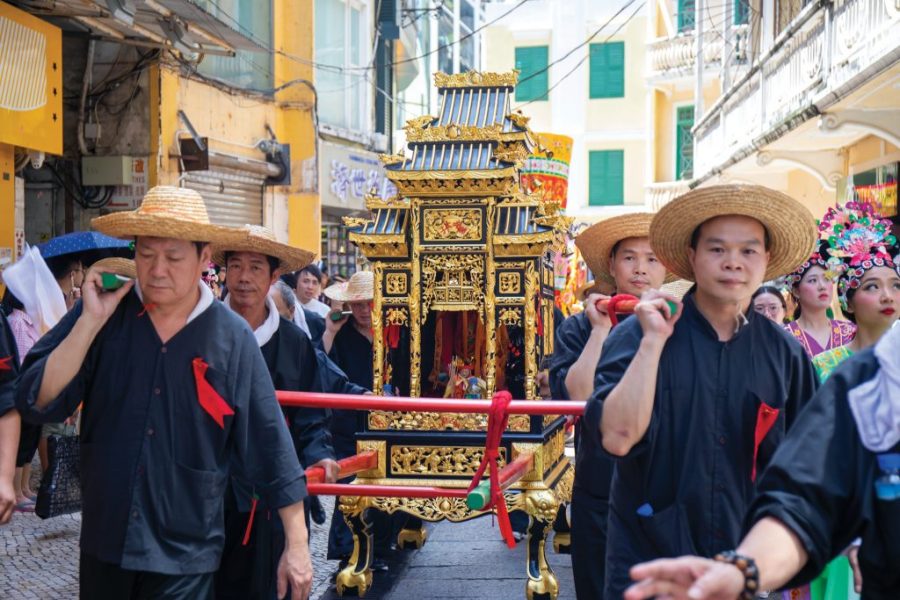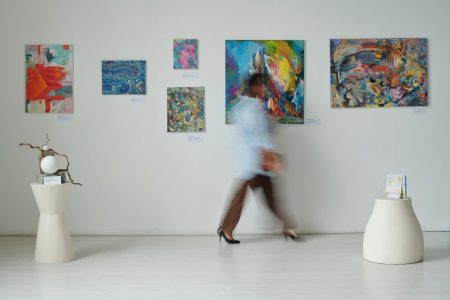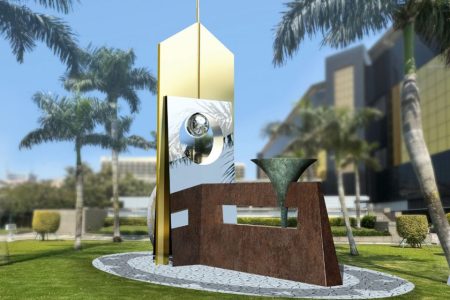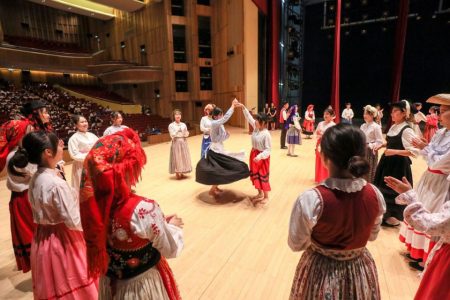Macao has been shaping its unique character, history and heritage, for more than 450 years. Since 1557, when Portugal was granted China’s territory as a trading post, the city has created its own unique and fascinating history – one influenced heavily by China, Portugal and many cultures in between.
Physical manifestations of Macao’s cultural fabric – from architecture to public squares, temples, street signs and gardens – have enjoyed the spotlight for years.
Most residents and travellers alike have mapped out key relics from the past – like the Ruins of St Paul’s, Moorish Barracks, Senado Square, Fortaleza do Monte (Mount Fortress), Guia Lighthouse, and A-Ma Temple, which was built in 1488 and proved that Macao’s heritage stretches back even beyond the past 450 years.
But physical landmarks aren’t the only way to experience and celebrate Macao’s rich history. Equally important are the city’s many examples of ‘intangible’ heritage – stories, traditions, beliefs and customs.
But what counts as intangible heritage? The government outlined this very question in 2013’s Cultural Heritage Protection Law, which set out to preserve both the city’s tangible and intangible heritage. According to the law, Macao’s intangible heritage includes oral traditions, artistic expressions, religious practices, events, and practices related to nature and traditional crafts.
Yet, shortlisting specific examples to be preserved, depends on 30-day public consultations – and the list is always subject to change. As of the last public consultation in 2019, the government added Tai Chi Martial Arts, Manufacturing and Painting of Portuguese Azulejos and Baatyam Percussion to its inventory of 70 intangible heritage elements.
Christianity: A cornerstone of Macao’s intangible history
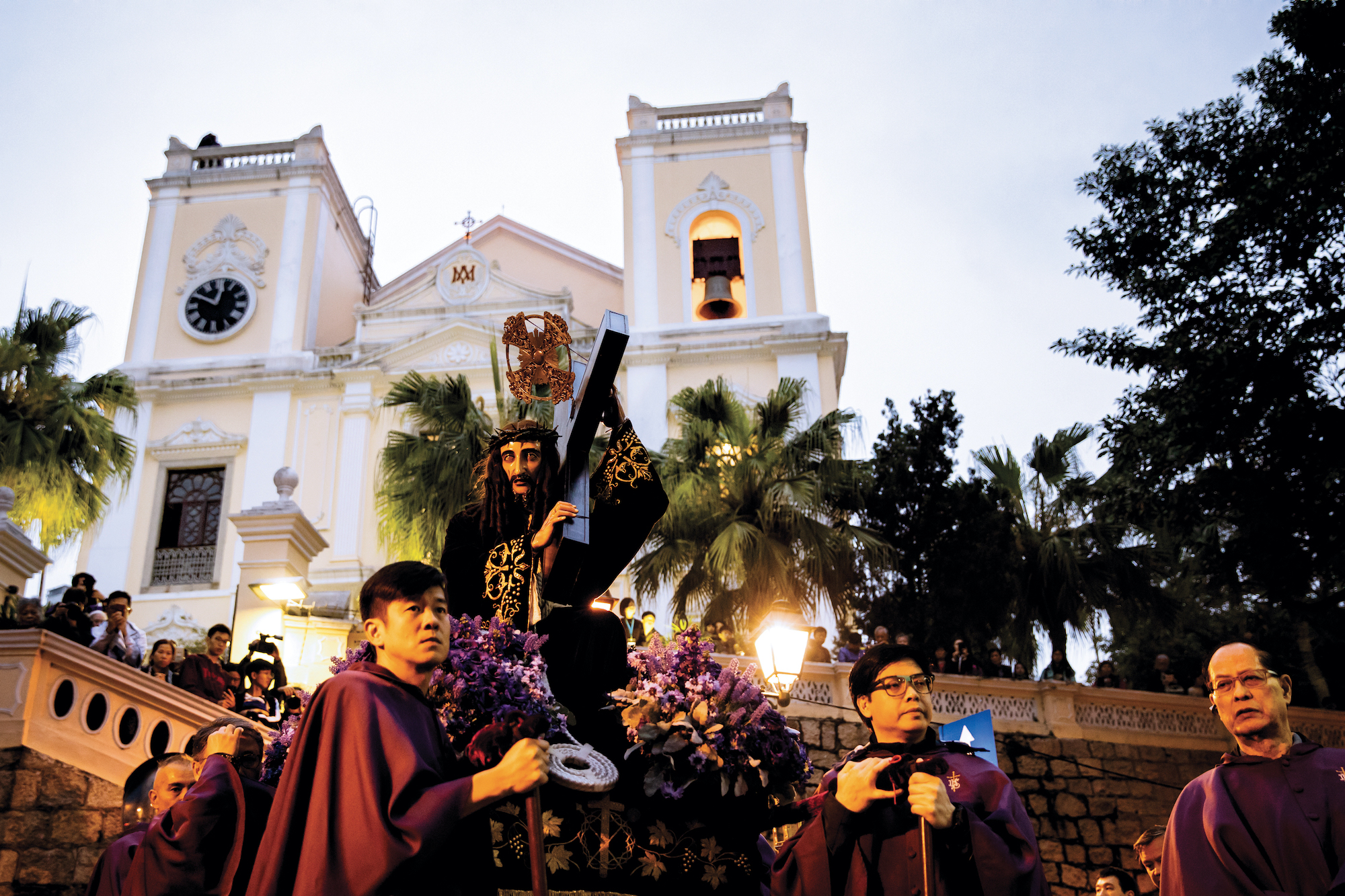
Of Macao’s 683,000 residents, about 30,000 are Catholic. For them, the rich Catholic history of the city is of huge importance – as it is to the crowds of Catholic tourists who visit the territory every year.
But they’re not the only major religious group in the city – there are more than 8,000 Protestants. According to Dr Priscilla Roberts, a specialist on Asian history and an associate professor at the City University of Macau’s Faculty of Business, it’s “difficult to understand the city’s past or present without taking its Christian heritage into account, especially given the heavy involvement of Christian churches in charitable organisations.”
The Portuguese brought a strong Catholic presence to Macao with them, as they settled in the city as early as the 16th century. Over time, Catholic missionaries followed, setting up churches and cathedrals that have come to dominate the cityscape. Since the 18th century, the proportion of Catholics in the city has been declining. But that does not mean its heritage should not be protected, whether tangible or intangible.
For instance, Macao’s religious processions are an unforgettable experience. There are multiple processions throughout the calendar, including Our Lady of Fátima, which takes place on 13 May every year.
“It is difficult to understand the city’s past or present without taking the Christian heritage into account, especially given the heavy involvement of Christian churches in charitable organisations.”
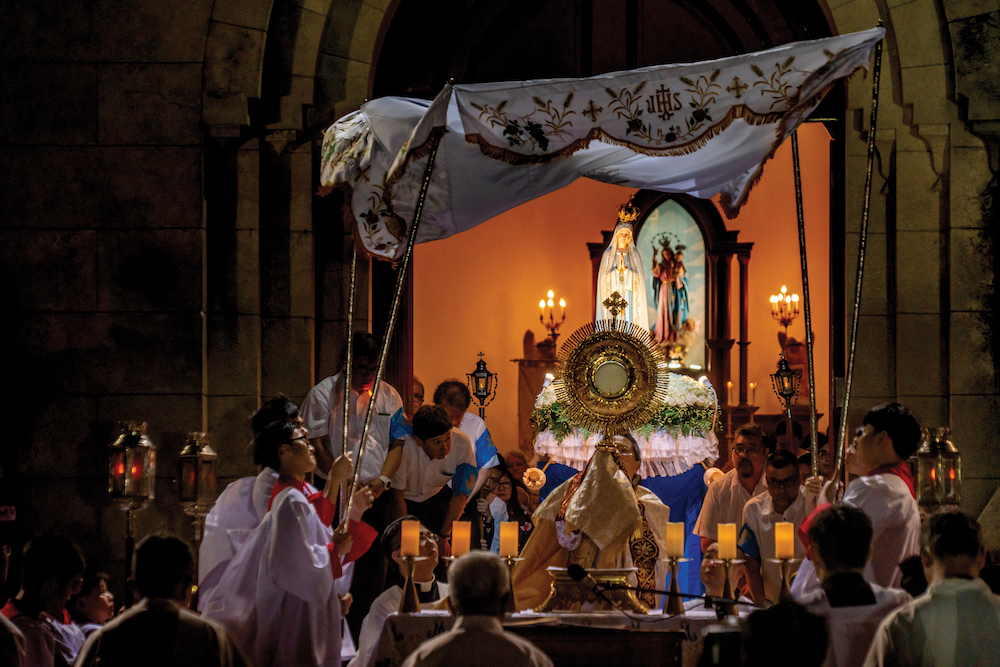
Macao’s Catholic population sways into the night through a sea of glimmering electronic candles and phone screens during the procession. A small white figure with hands clasped in prayer is carried, and she snakes her way above thick crowds in a magnificent spectacle.
The small white figure is a statue of the Virgin Mary, and the procession winds its way from St Dominic’s Church, through the Nam Van and Sai Van areas. It finishes at the Chapel of Our Lady of Penha, at the top of Penha Hill, where a solemn religious ceremony is held.
The event recalls the Virgin Mary’s apparitions to three shepherd children in 1917 in the central Portuguese town of Fátima. The appearance of Our Lady at Fatima culminated in, later that year, also in Fátima, the “Miracle of the Sun”, when the sun was said to have danced and changed colours in front of a crowd of more than 30,000 people. It was a moment which validated the faith of many Catholics.
The Procession of Our Lady of Fátima shares a similarly dramatic, unforgettable impact. The procession binds together Macao residents of all backgrounds, from Catholic Macanese to Portuguese descendants and immigrants, who come together to carry the colourful tradition into the night. In all, Macao’s Christian processions are, as Dr Roberts muses, the modern “expressions of deeply felt religious beliefs.”
Remembering Chinese folk traditions
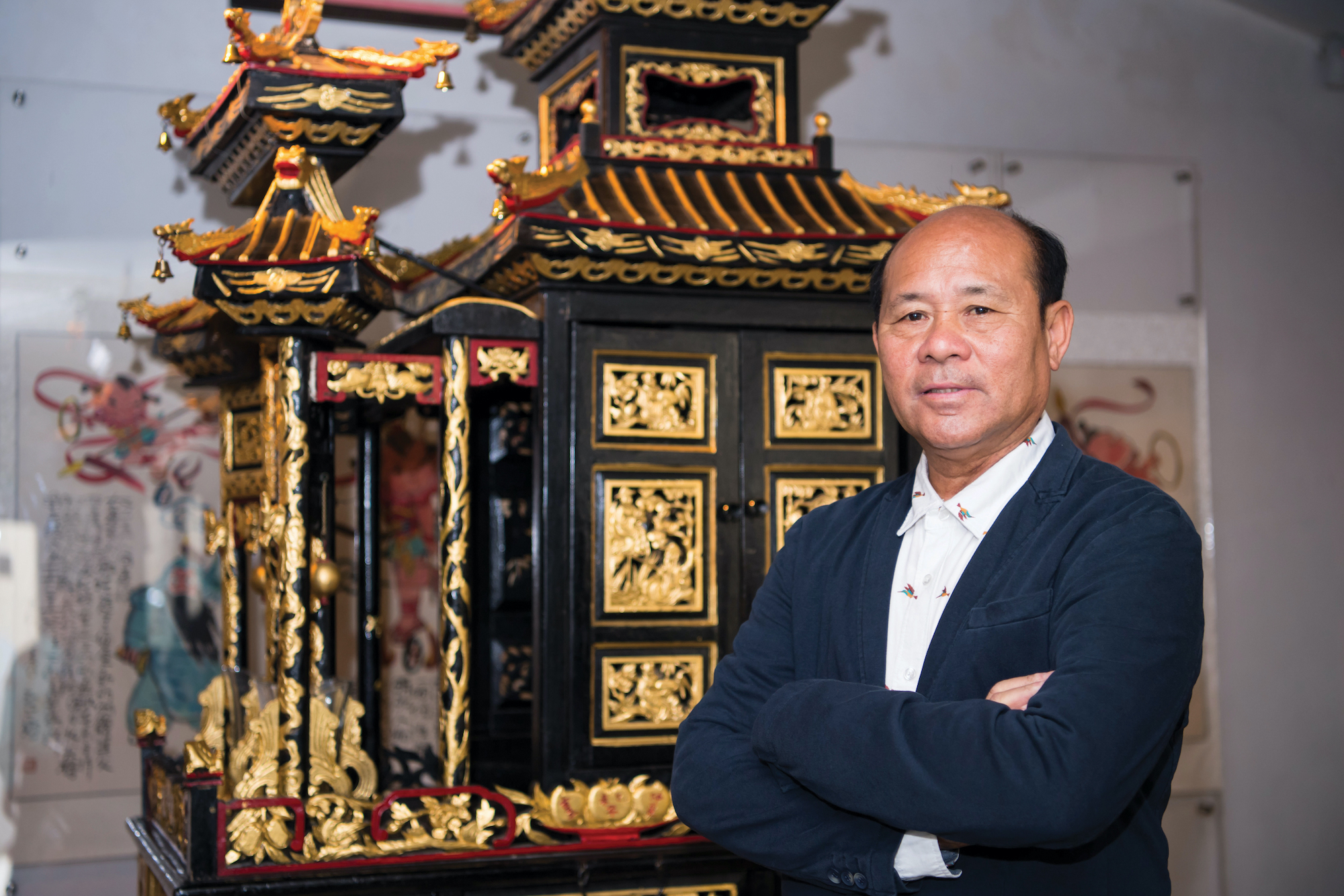
Traditional Chinese cultural and religious beliefs are just as important when it comes to Macao’s heritage. Take for example the Na Tcha Temple: Built in 1888, this Chinese folk religion temple in St Anthony’s Parish – the first of two Na Tcha Temples in the city – is dedicated to the deity Na Tcha.
According to Ip Tat, the chairman of the Na Tcha Temple Association, “more and more festivals were protected” and “Macao citizens started to pay more attention to all kinds of culture, including traditional Chinese beliefs” after the transfer of administration from Portugal to China took place in 1999.
In modern Macao, Ip believes that “Chinese faith is integral to the city”. Not only do residents practice ancient Chinese folk traditions, but many travellers choose Macao “just to visit the temples and churches”.
For Ip, who grew up going to Macao’s temples, the city’s many Chinese temples are not merely about faith. They’re also an essential building block of the community – bringing people together in moments of celebration and mourning, as well as everyday support, relief, entertainment and socialising.
“It is all about going to temples for meals, chatting and watching Chinese opera,” he says. One such annual gathering occurs on the eighth day of the fourth lunar month – the Festival of the Drunken Dragon.
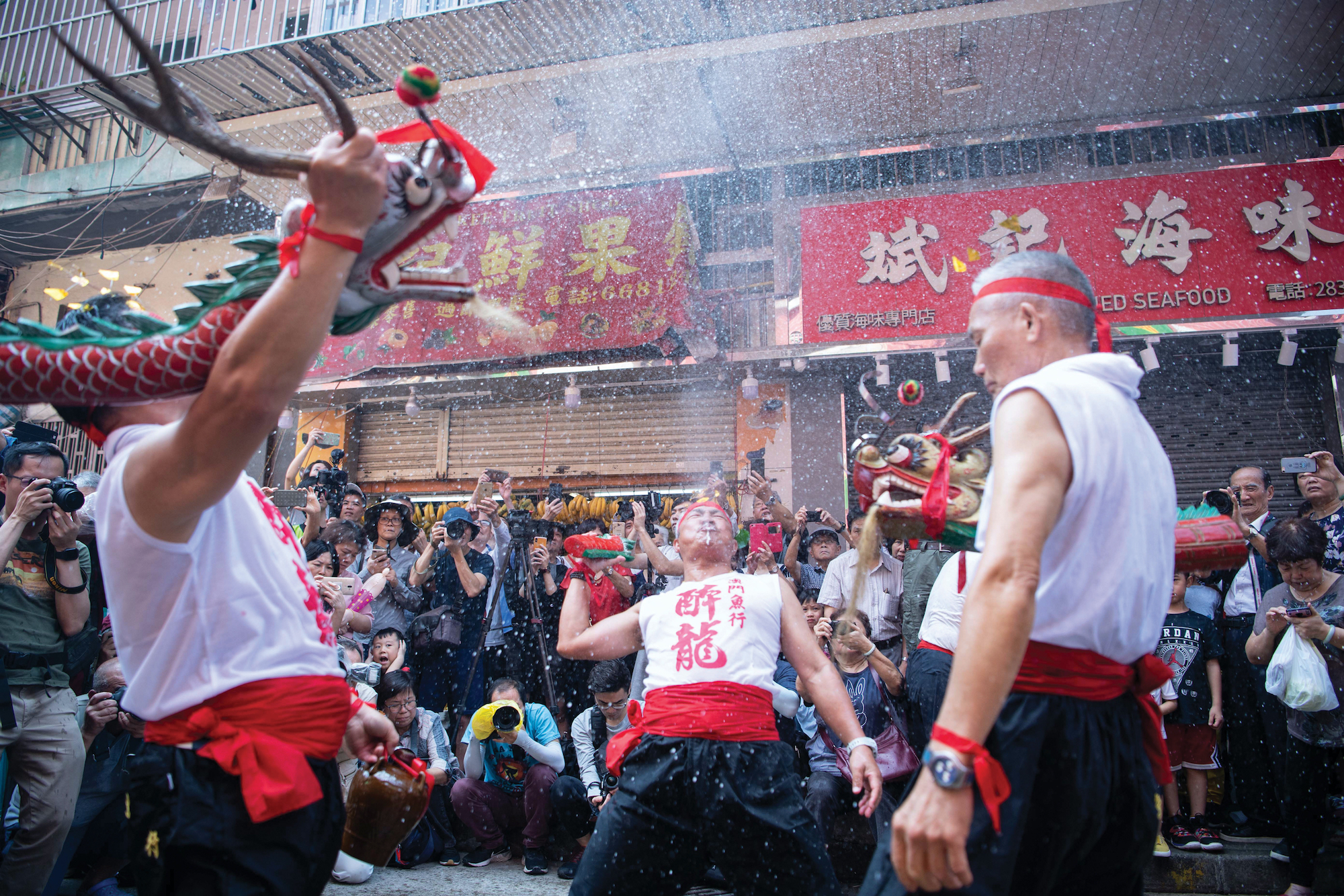
It begins at the Kuan Tai Temple near Senado Square, where men perform a drunken dance with the wooden head and tail of a dragon, made of fabric and bamboo. The dragon sparkles in the sun as the streets erupt with the rhythmic clang of gongs and the beat of drums. The dancers then parade through Macao to the Inner Harbour and drink alcohol until they drop.
The festival’s origin, as Ip notes, is uncertain. The tradition likely started in China, since the city has close ties to the region. Some believe the festival has its legendary origins in Guangdong’s old Xiangshan county, renamed the county of Zhongshan around 100 years ago.
One story tells of a man who found courage after a few drinks, then slew a dragon. The beast lunged from a river at a group of villagers who were pleading to a statue of Buddha to be cured of a great plague. After the man slaughtered the beast, its body fell into the river. Upon drinking the river water, reddened with the dragon’s blood, the villagers found themselves cured.
As the story continues, the villagers established the Festival of the Drunken Dragon to ward off the plague. As it spread to Macao, reckons Ip, it grew from the preserve of the city’s fishmongers and soon became a major cultural event.
On the morning of the procession, “longevity rice” (rice mixed with ingredients like pork, peanuts, mushrooms and black fungus) – said to bring peace and prosperity to the tens of thousands of people who eat it – is distributed outside Kuan Tai Temple. The rice, the dance, the atmosphere and the crowds all make for a unique Macao experience and an excellent example of the city’s intangible heritage.
Macao’s delicious food history

With over five centuries of culinary history and countless cultural influences, Macao is one of the most exciting places to dine in the world.
As the Portuguese moved to Macao, so too did their dishes and ingredients: clams in white wine sauce, arroz de marisco (seafood rice), spiced pork and pepper chouriço sausages, olives, dried salted cod…
Macao’s unique culinary style began to take shape as Portuguese flavours mingled with the city’s Chinese roots and trade ports along the spice trade route.
As Portugal grew as a trading empire, so too did its access to new ingredients. Cinnamon, saffron, pepper, chilli and cloves all travelled across the world with the Portuguese. Many of these spices ended up in Macao as did the different recipes and cooking methods from across the Portuguese territories.
It is probable, though debated, that the ever-popular African chicken originated in the Portuguese territories in Africa before making its way to Macao. The dish exemplifies the culinary fusion that makes up Macanese cuisine: the pepper hails from Portugal, the peanuts from Africa, the spice from China and the coconut from India, with the cooking techniques learned from those lands.
Considered one of the world’s first fusion foods, Macanese cuisine is based on Portugal’s cooking methods. Still, it incorporates styles and ingredients from Africa, India, Malaysia, China and other places worldwide.
Asian foods helped shape the cuisine’s style, especially ingredients like Malaysian coconut milk, Indian spices, Southeast Asian ginger and turmeric, and the introduction of curry, explains Mariana Pereira, a UK-based heritage and archaeology expert who previously worked in Macao’s heritage sector.
Naturally, Chinese ingredients and cooking styles also played a significant role – especially Yue cuisine, the culinary style of Guangdong province. Macanese gastronomy survives today and is repeatedly promoted and supported by the government as an essential part of the city’s intangible heritage assets.
What marks Macanese gastronomy as unique, adds Pereira, is not the abundance of different cuisines but how they interact with each other. As the Portuguese settled in Macao, they married people from all over Asia and beyond – from places like Japan, India, Malaysia, Africa and China.
As families became ethnically mixed, so did their food. Different culinary traditions began to merge to create new dishes. Portuguese dishes were changed to use local ingredients in place of imported ingredients that were hard to find at a particular time in the city.
Over the years, the unique and eclectic Macanese cuisine developed, including the British-inspired ground meat dish of minchi, beautifully flavoured with molasses and soy sauce. Then there’s stir-fried curry crab, pork chop buns, egg tarts and pato de cabidela, a stew made by cooking duck in red wine and its blood.
For Pereira, Macao’s nature as a trading hub has created a food that exists nowhere else. She says that it’s this unique fusion of cuisines from around the world – which, for a few patacas, anyone can experience – that led to UNESCO, just over two years ago, recognising Macao as a Creative City of Gastronomy. This honour also helps to protect and promote this delicious intangible piece of Macao’s heritage.
Preserving the art and soul of Macao
A light illuminates an otherwise inky-black stage in a compact Macao theatre, revealing a painted wall and a couple of chairs.
A handful of players gesture excitedly as they strut back and forth across the space, acting out their stories. The gestures and facial expressions feel familiar, but the language is far from it. It’s not Cantonese, Portuguese, nor English – but rather a combination of all three.
Patuá, the traditional Macao language, developed among the descendants of mixed Portuguese and Asian families in the 16th century. It was once widely spoken and evolved as other languages do, merging words from India and Malaysia into a hybrid Portuguese and Cantonese language.
By the 19th century, however, Cantonese was much more widely spoken in Macao than English due to the city’s proximity to British-administered Hong Kong. What was once the language of trade in the city was, by the 1950s and ‘60s, as Pereira puts it, “no longer considered to be Portuguese proper.”
Today, only a handful of people speak the language in Macao. Over the past few years, UNESCO has even estimated as few as 50 people speak it, deeming it a critically endangered language in the process.
“The people in Macao no longer use it to communicate,” says Pereira. “It’s also no longer used in schools. But we can record it in a register if people, one day, want to go back to it and learn it.”
“It would be so sad if it disappeared,” she adds. “Every language is a way of perceiving the world, so a world view is gone when a language fades away.”


One place where Patuá still thrives is the theatre. The language of Patuá is not recognised as an item of intangible heritage in Macao; however, the art of Patuá theatre features prominently on the list.
Since the 1930s, Patuá theatre has regularly satirised the city’s shifting politics and social movements with animated, moving shows. In recent years, theatrical company Dóci Papiaçam di Macau, founded in 1993, has performed annually at May’s Macao Arts Festival using Patuá language performances to poke fun at local traditions events lightheartedly.
“Patuá theatre gives diversity to the cultural panorama of the SAR,” says Macanese lawyer Miguel de Senna Fernandes, who is a playwright and director of Dóci Papiaçam di Macau.
“It reflects the multiculturalism, which is the essence of Macao, and that’s the concept the SAR cherishes and embraces. Through Patuá theatre, the audience can experience an environment where the context is neither Chinese nor Portuguese as it’s in a language that is genuinely from Macao.”
He believes that Macao’s intangible heritage should be celebrated and preserved, just like physical heritage sites. “Intangible heritage shows how unique this tiny little city is from the rest of China.”
“It’s a way to promote our sense of belonging. In the age of globalisation, being different should always be cherished.”

